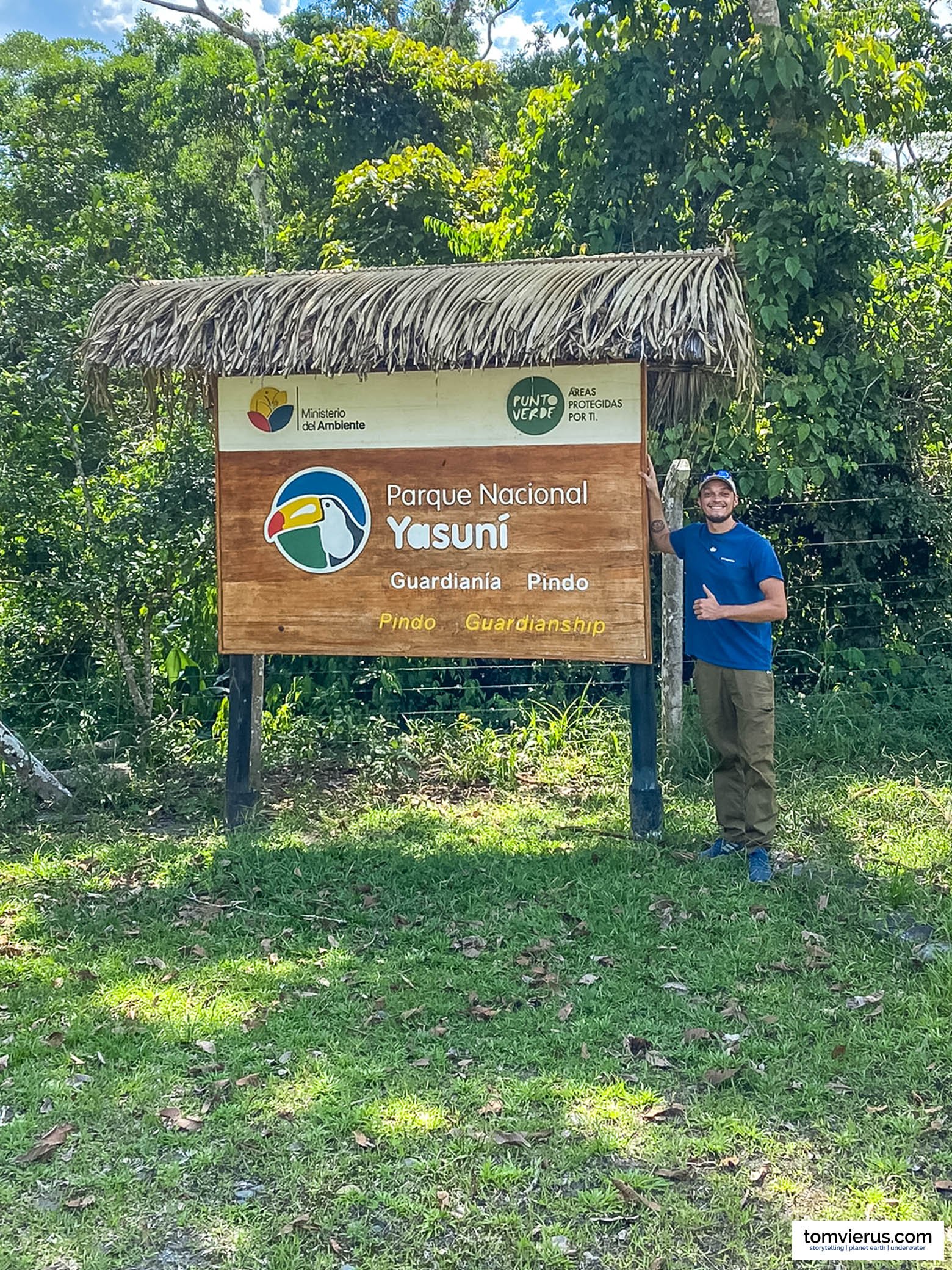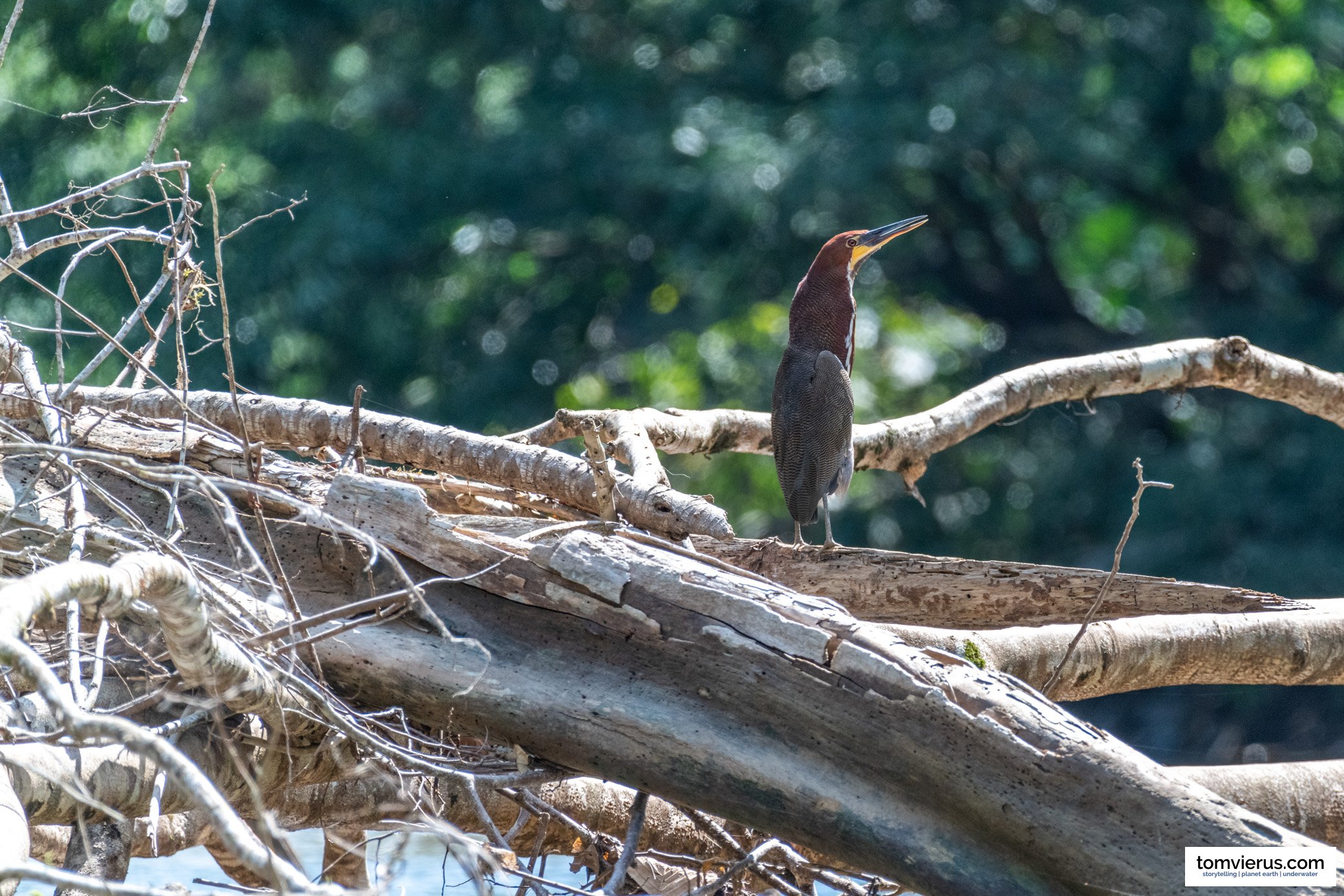Photography tour Yasuni National Park | Mandari Panga Lodge | Part 1
When I travelled to Ecuador in December 2022, my final destination was the Galapagos Archipelago where I joined a liveaboard trip with the Master Fleet and had the best dives of my life. Getting there from Fiji was quite a hassle and I knew I wanted to try to maximise the time there and visit the Amazon. Years back I spent three months in Peru and visited the Pacaya Samiria National Park - a time that I fondly remember and that got me quite hooked on the rainforest ecosystem and its abundance of life. After a little bit of research, my aim was to visit the Yasuni National Park, one of the most biodiverse regions on our planet and a UNESCO biosphere reserve designated in 1989.
The Yasuni National Park
One of the most biodiverse places in the world and home to uncontacted tribes – the Yasuni National Park in Ecuador.
The amount of gear I was taking for this trip was at the maximum that I could handle myself: Nearly 70kg including the underwater equipment for the Galapagos trip.
The Yasuni National Park spans almost 10.000 km2 and is located in the far east of Ecuador at the border with Peru. The park lies on the ancestral territory of the Huaorani indigenous people, which comprise more than 4000 people and speak the Huaorani language. Within the park boundaries, there are also two uncontacted indigenous tribes, the Tagaeri and Taromenane, both of which are believed to be related to the Huaorani clan.
There are two main zones in the park: the accessible zone as well as the intangible zone to which access is entirely prohibited and which comprises the land occupied by the uncontacted tribes. I found it incredibly fascinating that there is an area of the park which cannot be accessed in order to protect the culture of the uncontacted tribes, which have chosen to remain true to their lifestyles and not succumb to the Western way of life. The park itself is believed to be one of the most biodiverse regions on the planet, and it has been shown that the park boasts the highest amount of species richness within a less than 100 km2 area.
This dense aggregation of plant, fungus and animal life is a photographer's dream, and although the conditions are extremely challenging with the obvious lack of infrastructure, electricity, very high humidity and heavy rainfalls, the rewards - at least from a photographer's perspective - are incredible and definitely worth it. To me, this trip was exploration at its best.
The Mandari Panga Lodge
The entrance to the community-run lodge.
All “rooms” have a balcony facing the river. Chilling in a hammock and watching wildlife fly by was pretty amazing.
The incredible setting of the lodge, its rustic charme and the fact that there is no electricity other than the generator makes this an ideal place to switch off from the constant pressure of cell phone and social media availability. Why not relax with a candle and listen to the sounds of the rainforest instead?
While planning my trip to Yasuni, I scoured the internet for accommodation options which wouldn't break the bank. Many of the available lodges are incredibly expensive and often charge extra for smaller groups or guides who tailor a tour to your needs, in my case, photography. After some research, I came across the Mandari Panga Lodge, which had also worked together with some of my fellow members of the International League of Conservation Photographers.
Mandari Panga seemed right away a promising fit, and after the first contact, it didn't take long, and the dates were set! I couldn't wait! While most lodges are fringing the borders of the nearly 10.000 km2 park but a smaller, community-run lodge by the name of Mandari Panga was actually located right inside of it and after a few emails back and forth, I decided to spend my time there. Located on the banks of the Tiputini River, this place is absolutely stunning and offers medium-range sleeping options that I honestly found quite luxurious. There are several wooden platforms built around the lodge, each of them with a proper roof to shield against the rain (remember you are visiting the rainforest here).
On each platform, there is a sturdy tent that harbours either bunk beds or a double bed, which are also protected by a mosquito net. Personally, I couldn't wish for more and also wouldn't need more than that. In the centre of the lodge, there is a large, traditionally built house with a community area with chairs and tables, as well as an open kitchen. And the entire lodge is situated right in the deep Yasuni National Park - it is truly a dream there.
Getting there from Fiji
After a face-paint by my guide Ramiro, who was absolutely fantastic at spotting any kind of wildlife and a pleasure to hang out with. Gracias amigo!
The trip from Fiji was a nightmare: after flying to Honolulu and spending a few days there to explore the area a little bit, I went on to fly to Panama and from there to Quito, Ecuador's capital city. I spent another night before flying on to Coca, the capital city of the Province of Orellana, in eastern Ecuador. Shortly after touching down, one of the guides came to pick me up from the airport, and our journey was about to start. I found out I would be the only guest at the lodge (yay!) and was assigned Ramiro, a young guide and brother of the manager who founded this community-run project a few years back. The Mandari Panga Lodge is probably the youngest lodge in the area, and I was excited to see it for myself.
With a pickup loaded with food rations for the week, we started our drive towards the Tiputini River at the edge of the Yasuni National park. The drive took about two hours, starting on paved roads and finally continuing on gravel roads when we got further away from Coca. It was somewhat of a reality shock when we started passing oil drilling pumps, large oil refineries and dozens of related trucks and vehicles working for those companies. It felt strange that I was on my way to witness this - to a large degree - pristine natural reserve while at the borders of it, nature was solely destroyed for the commodity the whole world (still) depends on and needs: oil.
The Yasuni National Park and Oil Business
There is a lot at stake: the dense canopy of the rainforest of the Yasuni National Park provides habitat to a record number of species.
The zoning plan of the Yasuni National Park including the location of Block 43-ITT. Source: Dialogo Chino
Ecuador's largest oil reserve happens to lie beneath the Yasuni National Park - more than 1,6 million barrels are suspected here, the country's largest oil exploration project to date. In 2007, then-president Raffael Correa announced his plan to leave the park's oil in the ground if around 3 billion US Dollars could be committed from the international community. A bold and great plan if you ask me, but after several years, it became clear there wasn't enough commitment from foreign governments and inter-regional organisations to meet the financing.
Five years later, Correa announced the collapse of the plan and drilling operations finally commenced in 2016. Since then, the old fields of the region, namely Ishpingo, Tambococha, and Tiputini, have been collectively referred to as Block 43 or ITT. The large Ecuadorian state-owned company Petroecuador manages the field and has awarded several subcontracts to Chinese oil companies. China is a large debtor of Ecuador with more than five billion US Dollars owed, and besides awarding contracts to Chinese-owned companies, not yet extracted oil has already been sold to China. The fact is the drilling is continuing, and Ecuador is planning to increase its output, as was announced by the Ecuadorian government as recently as August 2022.
Although damage has already been done, let us all hope the balancing act of governments between economic growth and nature conservation doesn't tip too far towards the first. After all, oil production makes up about one-third of Ecuador's national budget, and tourism related to the Yasuni cannot, unfortunately, match that. (Here is a great article discussing oil drilling in the Yasuni area in much more detail.)
Entering the park and changing transport to a boat
Once we had entered the official boundaries of the park, we moved food rations for the upcoming stay from our pickup onto a boat.
These long boats are incredibly spacious and comfortable and are perfect for spotting wildlife along the river banks, so keep your camera and telelens ready!
The first bird sighting of the trip: a Rufescent Tiger-Heron (Tigrisoma lineatum) rests on a tree trunk at the shores of the Tiputini river.
Once we had reached the entrance of the park, I was required to sign myself in the park registry, and we offloaded our track to change our mode of transport: from here on onwards, no more roads would carry us deeper into the rainforest, but we were dependent on the water. More specifically, the Tiputini river is a tributary of the Napo River. We packed all our gear into the surprisingly log, spacious and comfortable Mandari Panga boat and had another two hours of river cruising ahead of us (which is, by the way, absolutely spectacular - very comfortable, and you have the chance of seeing lots of wildlife around the river banks).
The whole lodge for myself
The entrance to the community-run lodge.
Part of the blackwater lagoon system near the Mandari Panga Lodge.
Happy faces from Ramiro and myself
When we arrived at the lodge, it was completely empty. Walking up the path towards the main house, a large, beautifully built traditional wooden structure with a kitchen and a large dining room/lounge area, we discovered an animal had created a little chaos in the kitchen and spread flour all over the place. We knew it had to be an animal as paw prints were visible on the floured floor. Ramiro's first thought was it might have been an Agouti or something similar. Ha!
After all, we were in a jungle and what a cool welcome. While the four present members of the Mandari community tended to the grounds, Ramiro and I discussed the plans for the next few days. What did I want to see? Did I have any specific wishes, e.g. birds I would love to find? What trips could be done in the area? I basically wanted to see as much as possible and do as much as we could - maximising the time I had here and making the absolute most of this adventure I had been looking forward to for a very long time.
In the later golden afternoon light, we made our way across the river equipped with a kayak and carried it to a nearby blackwater lagoon, a fascinating ecosystem and habitat of the king of snakes - the anaconda! Just a week prior, Ramiro spotted one dazing in the thick bush surrounding the edges of the lagoon. The light was perfect; I had my 500m lens on the Nikon D850 and quietly started making our way over the lagoon. Ramiro was paddling almost completely still; not much power was needed in these absolutely still waters. I was sitting in front and able to concentrate solely on capturing images. What a dream!
To be continued in Part 2!
If we found the anaconda or not will be revealed in the next part of this series, so stay tuned.
















